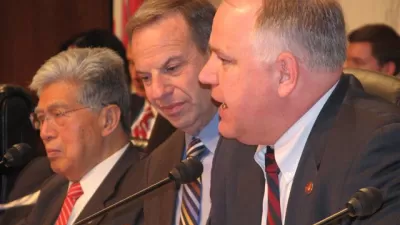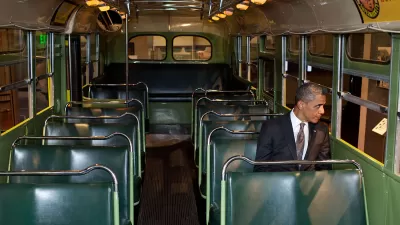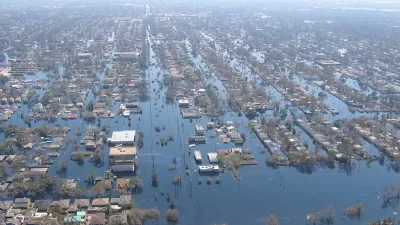The highly anticipated "job speech" by President Obama this evening will address, among other issues, the infrastructure bank. Michael Likosky argues that it is the only possible revenue stream for the nation's $600 billion infrastructure projects.
The idea behind the infrastructure bank (I-Bank) is straightforward. Upon the creation of a federal agency that oversees the financial arrangements of infrastructure projects, the government would provide incentives in the forms of loans and loan guarantees just enough to attract private investors who would pick up the tab and finance the rest.
But the legislation faces three major hurdles, according to Likosky. Unlike other economic stimulus measures, the I-Bank does not deliver instant results. This makes it a tough sell among politicians with impatient constituents. Additionally, the initial investment of $5 billion per year for several years lies on the high end of the spending gamut relative to the budget deficit.
Then there is the inherent political gridlock in Washington estranged of bipartisanship. Deploring federal involvement in just about every proposed legislation, congressional Republicans prefer the state-run alternative like the California Infrastructure and Economic Development Bank. "[C]onservatives don't like government's involvement in the I-Bank, even as facilitator. They think it will merely add more bureaucracy," notes CNN Money reporter Chris Isidore.
FULL STORY: Infrastructure Bank: Fixing how we fix roads

Alabama: Trump Terminates Settlements for Black Communities Harmed By Raw Sewage
Trump deemed the landmark civil rights agreement “illegal DEI and environmental justice policy.”

Study: Maui’s Plan to Convert Vacation Rentals to Long-Term Housing Could Cause Nearly $1 Billion Economic Loss
The plan would reduce visitor accommodation by 25% resulting in 1,900 jobs lost.

Planetizen Federal Action Tracker
A weekly monitor of how Trump’s orders and actions are impacting planners and planning in America.

Waymo Gets Permission to Map SF’s Market Street
If allowed to operate on the traffic-restricted street, Waymo’s autonomous taxis would have a leg up over ride-hailing competitors — and counter the city’s efforts to grow bike and pedestrian on the thoroughfare.

Parklet Symposium Highlights the Success of Shared Spaces
Parklets got a boost during the Covid-19 pandemic, when the concept was translated to outdoor dining programs that offered restaurants a lifeline during the shutdown.

Federal Homelessness Agency Places Entire Staff on Leave
The U.S. Interagency Council on Homelessness is the only federal agency dedicated to preventing and ending homelessness.
Urban Design for Planners 1: Software Tools
This six-course series explores essential urban design concepts using open source software and equips planners with the tools they need to participate fully in the urban design process.
Planning for Universal Design
Learn the tools for implementing Universal Design in planning regulations.
Caltrans
Smith Gee Studio
Institute for Housing and Urban Development Studies (IHS)
City of Grandview
Harvard GSD Executive Education
Toledo-Lucas County Plan Commissions
Salt Lake City
NYU Wagner Graduate School of Public Service





























